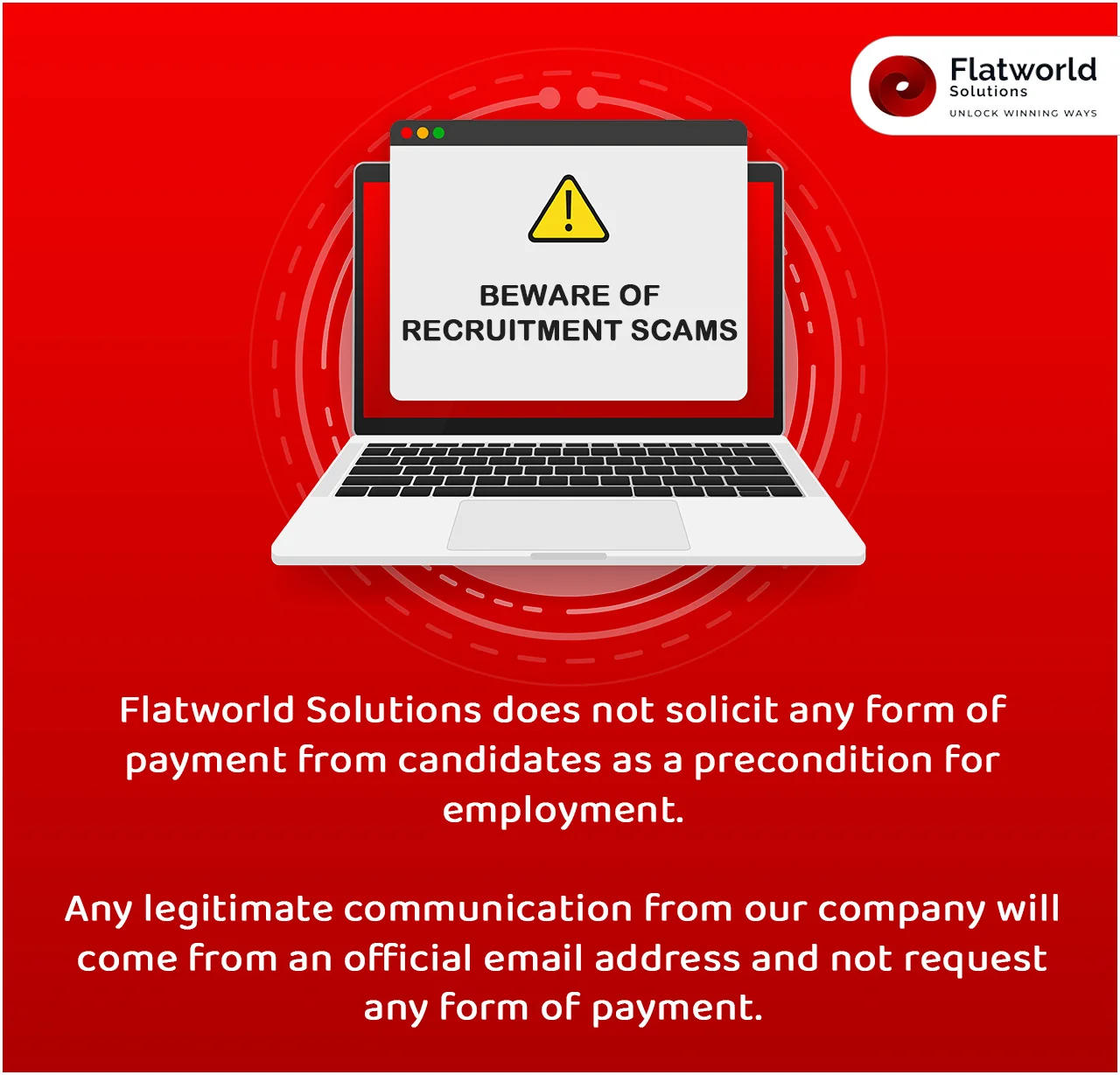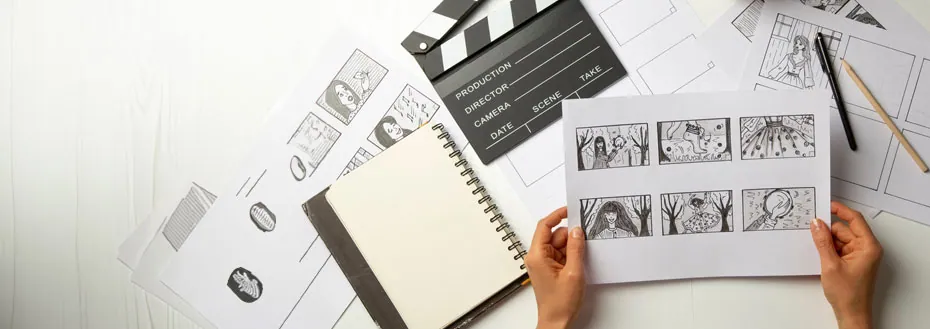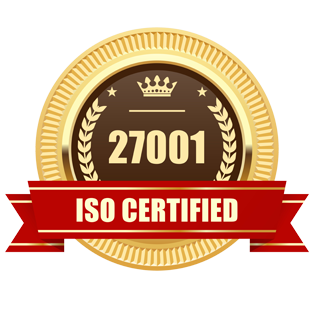Visual storytelling in filmmaking requires a technical tool that connects imagination and reality behind every frame, and that is your storyboard. For short films, where time is gold, having an excellent storyboard ensures your ideas are clearly communicated in the shortest time possible. Storyboarding has allowed filmmakers to sketch out the narrative visually, which improves the clarity and coherence of storytelling.
Whether you're an experienced director or a budding filmmaker, storyboarding is the process that transforms your creative project by refining your ideas and bringing them to life. Let’s now explore the techniques that help you craft spectacular storyboards for short film production and maximize your impact on the audience.
Top 5 Techniques for Crafting Exceptional Storyboards
A good storyboard requires creativity, technical skills, and a deep understanding of the story you want to narrate. This is what these top five storyboarding tips will help you achieve.
-
Thorough Understanding of Your Script
Start by analyzing the script and identify ways to dissect thematic nuances and narrative layers. Understanding the subtlety, emotion, and pacing of your story makes all the difference. You can then scrutinize emotional arcs, dialogue subtleties, and character development for visual interpretation.
Next, break down each of your scenes into key moments and envision those within pictures. Finally, visualize each element in terms of framing, shot composition, and visual motifs. This deeper understanding guides you through the process of creating your storyboard and fitting it into the film's emotional and thematic core.
-
Improve Composition and Framing
Composition and framing are the keys to successful visual narration. Professional storyboard services are not afraid to experiment with various angles, perspectives, and compositions to bring the mood and tone of every scene into view. This approach improves the clarity and flow of sequences.
You can apply leading lines, rules of thirds, and depth to develop more dynamic frames that captivate viewers into your story. A well-composed frame conveys complex emotions and layers of narrative without the need for subscripts.
-
Stick to Simple and Clear Visuals
If you constantly struggle with how to storyboard a short film, then just keep things simple. Create easy-to-decipher drawings that convey your narrative intent through sleek, bare-bone representations. Scene transitions, dynamic actions, and character movements can be illustrated using rudimentary figures and geometric shapes.
Prioritizing clarity over artistic embellishments prevents ambiguous communication of ideas. Your drawings should be recognizable, clear, and concise even if they are rough. This helps you use a storyboard as a tool for communicating so that all the production stakeholders can accurately interpret and execute the director’s vision.
-
Highlight the Key Elements of Your Story
It is crucial to emphasize the key moments and creative narrative elements in your storyboard, as they help you maintain coherence and effective filmic pacing. Use annotation, directional indicators, and color-coding techniques to isolate and accentuate narrative focal points, such as a critical action scene, an important moment of a character, or an emotional climax.
Deliberately marking these elements helps the production team understand the functional relevance of these elements in the film’s overarching arc. This makes it easy for all the creative teams to align with the smaller goals and foster a unified storytelling perspective throughout the production process.
-
Incorporate Movements and Time Frames
Storyboards are not just static images; they should capture the flow and timing of your short film. Your storyboard should summarize the dynamic flow of temporal and motion progression, which is the cornerstone of your film narratives. Accurately denote scene transitions within each frame using notation systems and industry-standard symbols
Indicate camera movements, transitions, and pacing within your frames. Most professionals use arrows or symbols to denote motion and timing. This helps you convey the rhythm and tempo of each scene, which aids in planning shots, editing, and ensuring the film's visual and narrative continuity.
The Conclusion: Bringing Your Vision to Life
Mastering the technique of storyboarding is a significant step for any filmmaker interested in creating exceptional short films. Most of them outsource storyboard services to arrive at superior creative outputs within shorter time frames. The best way to boost your master script is to keep the composition simple, simplify your visuals, and highlight the key elements.
This creates a blueprint for your cinematic vision. Implementing these techniques makes your storytelling more lucid and coherent while making your production processes much easier, as every single frame is deliberate and perfectly resonates with your target audience. A clear storyboard helps visualize the film better, enables superior production planning, and keeps the team on track.
Contact UsAvail best-in-class services at affordable rates
Our Customers





Key Differentiators
Case Studies
-
Germany's Top Ad Agency Scaled Up their Services with Our Skilled Graphic Designers
-
We Provided Cutting-Edge Artwork Services to A Leading B2B Media Company with 44+ Publications
-
Flatworld Solutions Provided High-End Travel Video Editing Services to an US-based Client
-
Flatworld Solutions' Quick & Effective Photo Retouching Services Helped a UK-based Client Cut Costs by 50%
-
Flatworld Solutions' Wedding Video Editing Services Helped A US-based Client Scale Up Seamlessly
Join the growth phase at Flatworld Solutions as a Partner
Service distributorship and Marketing partner roles are available in select countries. If you have a local sales team or are a person of influence in key areas of outsourcing, it's time to engage fruitfully to ensure long term financial benefits. Currently business partnerships are open for Photo Editing, Graphic Design, Desktop Publishing, 2D and 3D Animation, Video Editing, CAD Engineering Design and Virtual Walkthroughs.

USA
Flatworld Solutions
116 Village Blvd, Suite 200, Princeton, NJ 08540
PHILIPPINES
Aeon Towers, J.P. Laurel Avenue, Bajada, Davao 8000
KSS Building, Buhangin Road Cor Olive Street, Davao City 8000
INDIA
Survey No.11, 3rd Floor, Indraprastha, Gubbi Cross, 81,
Hennur Bagalur Main Rd, Kuvempu Layout, Kothanur, Bengaluru, Karnataka 560077



